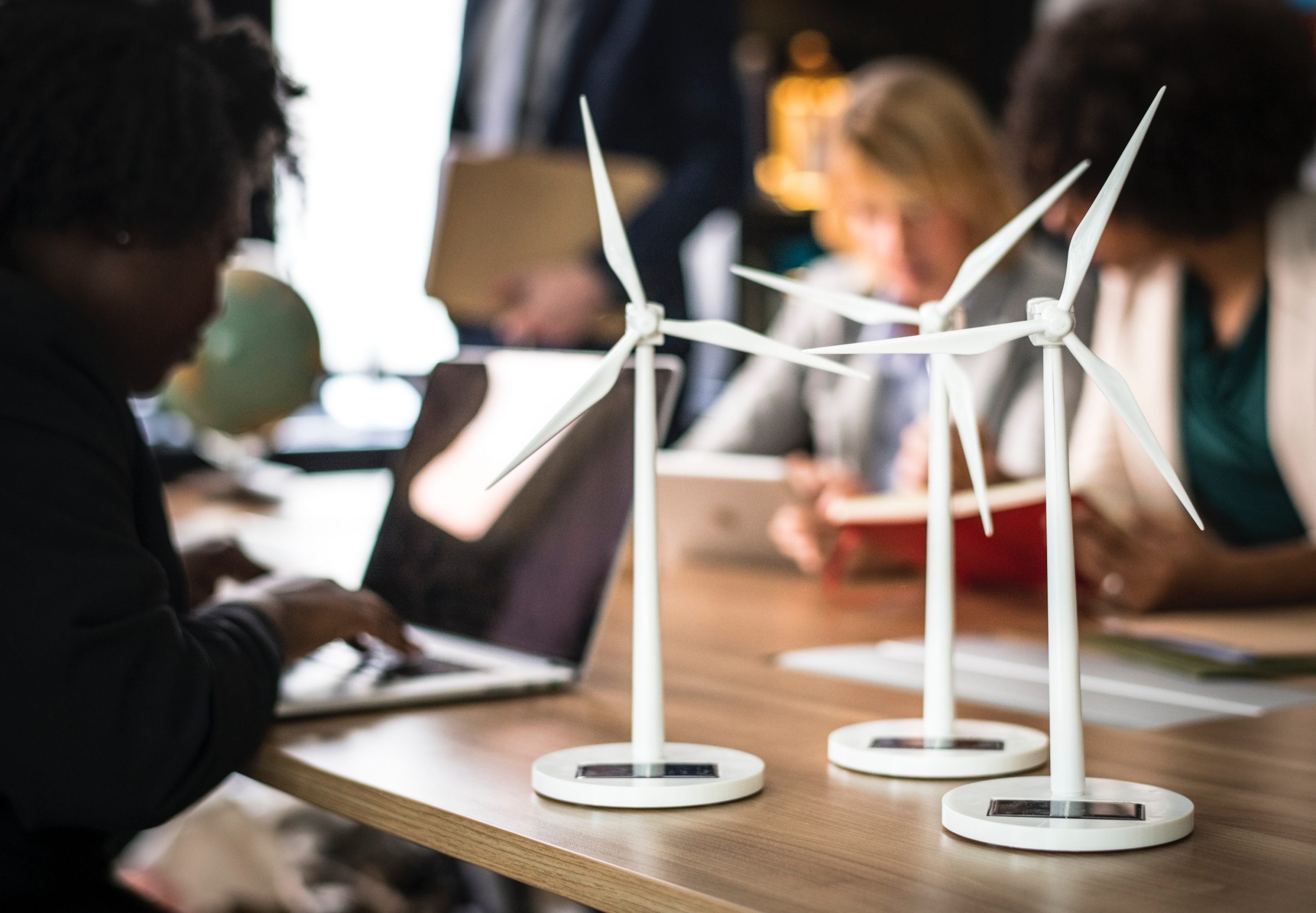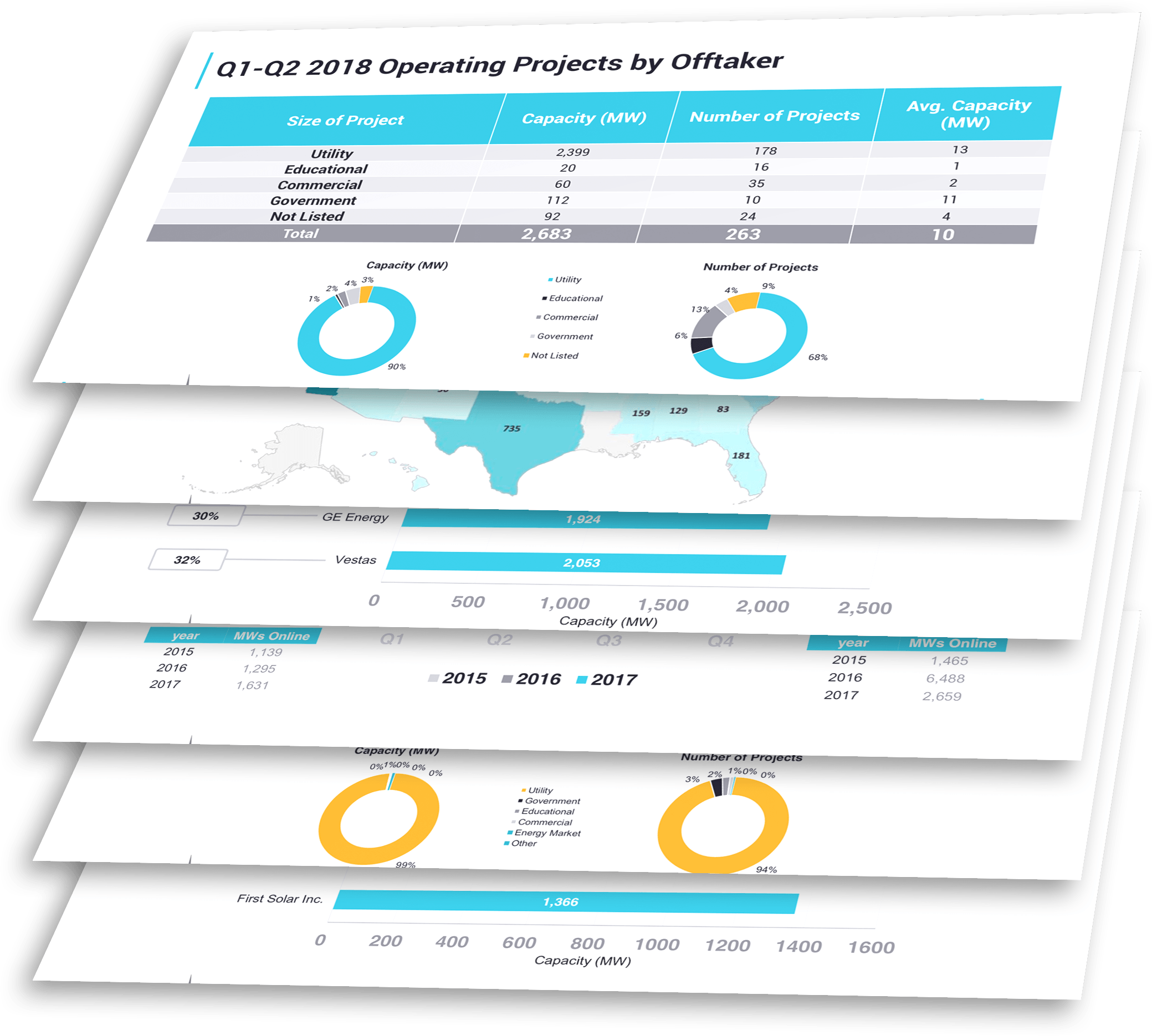
When we talk about renewable energy project finance, we separate the audience into two types of people: developers who build and sell when the project is live, and others who build a project to own. For developers who build to sell, finding buyers is a key component of the process; at the end of the day, you just want to be paid the highest price. And for people who develop to own, they have to go to the bank and find people who provide tax equity. Both of these angles require an understanding of renewable energy project finance.
For insight on alternative energy financing, we spoke with Izzet Bensusan, CEO, founder, and partner of Karbone Inc., a fully integrated financial services firm that specializes in renewable and traditional energy markets. Take a look at his advice on renewable energy finance for developers:
See real project data you’ve been missing. Demo the Energy Acuity Database for free.
Before you can choose a renewable energy project financing partner, you must have a project that’s ready to be sold. According to Bensusan, five components need to be in place before a finance pitch can take place:
1. You need to know when a project becomes valuable.
Inexperienced developers may think that signing a lease for 20 years means you have a project—however, that’s not where the value is created. Value is created once a project secures key documents such as PPAs, ISAs, and a sense overall cost and qualification to various incentives such as SREC programs. Finally, the real value will know when the project bought into by financial partners and backers, developed, and begins generating energy—not earlier than that.
2. You need to have an extended lease.
You need to have the land locked in for at least 20-25 years, with extensions. If you don’t, any partner who may be interested in financing you may back away out of concern for losing the land before the project becomes profitable.
3. You need to know who’s going to buy the power that your renewable energy project generates.
You can’t just say you’ll generate power and distribute it to whomever. You need a local utility, corporation, etc., committed to buying power for, say, 25 years at a predetermined rate; otherwise, you don’t know how much money you’ll make (and financiers won’t know how much they will make).
4. Your project needs to be able to serve power into the grid.
Your project needs an ISA or Intergrid connection in order to be able to hook up to the grid. This process involves utilities, building substations, etc., and is important, because having a power source without a way to get it to the grid makes it unusable.
5. You need a good plan for bringing in someone who will design and build your project.
That includes costs for design and approximate costs for building your project. When you know cost and time, you have the last step in having a project ready to go.
Once you have at least these five things in place, you’re ready to go out in front of potential buyers. Here are some things to pay attention to in the next stage.
Once your project is ready to sell, don’t get derailed by your leases and contracts.
- If you sign a lease for the land, it can’t be a one-pager. A lease should be detailed and address everything in order to be bankable. Your financing partner must feel comfortable that they have rights and protections. Signing a random lease could be more harmful than not having one at all.
- Get sound legal advice before signing contracts and paperwork for your lease, power agreements, and other things.
- Don’t jump into a quick turnaround on your paperwork. Developers find they do quick turnarounds and negotiate power purchase agreements that don’t actually cover protections. The expense of making changes reduces your cut. Take the time to do leases and contracts the right way the first time, and you’ll eliminate further hassle for your financing partner and yourself.
Use a consultant or an advisor if necessary.
For experienced developers, advisors may not be necessary; for almost everyone else, they are indispensable. Mistakes made along the project financing path could force long negotiations to resolve, and cut in half the expected profits. To eliminate this costly frustration, a consultant or advisor should be on your team.
Prepare your proposal before you go to a bank or tax equity institution.
Preparation is everything when pitching your renewable energy project to a bank or tax equity institution. Find out what your financing partners are asking for before you pitch your project, so you can come prepared. By working with a local lending institution, you can get valuable guidance and prevent delays in the process.
Use a checklist so you can have your product ready to go from day one.
Your financial institution may give you a checklist that includes the following items:
- Contract information— the length of the contract, out clauses, protection
- Project feasibility
- Independent engineering review
- Independent legal review
- How much you have in collateral
- Recourse or non-recourse loan
- Lender’s checklist
- Overall system design and list of components
- Long-term operating plans
By preparing before you pitch a project to a potential financing partner, you can be certain you have answers to all the questions in their mind—showing them that your project will be valuable to them.
Contact the experts at Karbone to find out more about renewable and traditional energy project financing.


I have been asked to join a group in a new alternative energy project-and I need to start at the very base to ensure I have the proper knowledge to make the best decision for all.
I was wondering – Could you direct me to a source (book, web site -for a glossary of terms and structures, etc.)
Gratitude
I found a couple of good resources that might help: 1.) CERT Glossary 2.) CNBC 3.) The Academics of Science, Engineering & Medicine
If you’re struggling to grasp any concepts or would like real-world applications for a specific term, please let me know!
Thanks,
Greg